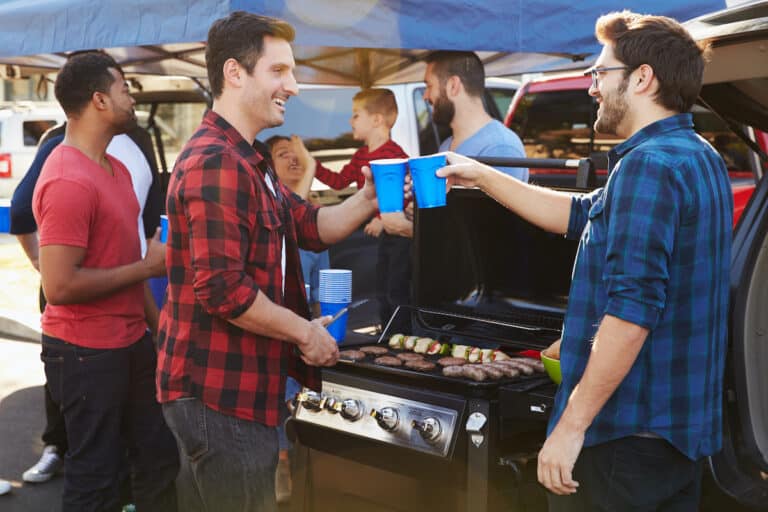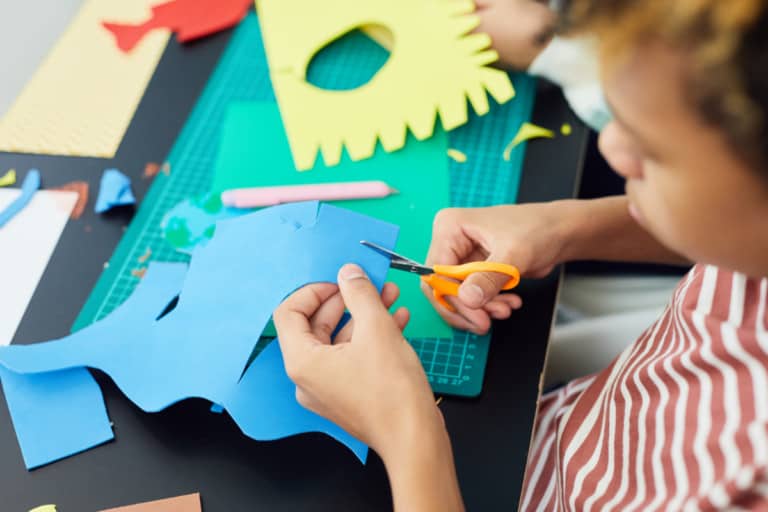M.A.R. Surf Exchange: Virginia Beach Surfboard Designs

Virginia Beach surfboard shaper Nick Halleran walks us through the dying art of surfboard shaping, his passion to preserve it, and how he’s bringing the surfing community together along the way through his business, M.A.R. Surf Exchange.
Surfboard design is an ancient art. Its roots go back thousands of years ago, where surfing was commonplace in ancient Polynesian culture. Now a multi-billion dollar machine, the surf industry has grown (and changed) tremendously. Nick Halleran seeks to pull everything into perspective with his D.I.Y. Surfboard shaping company– Make And Ride Surf Exchange.
The Man Behind The SurfBoard: Nick Halleran
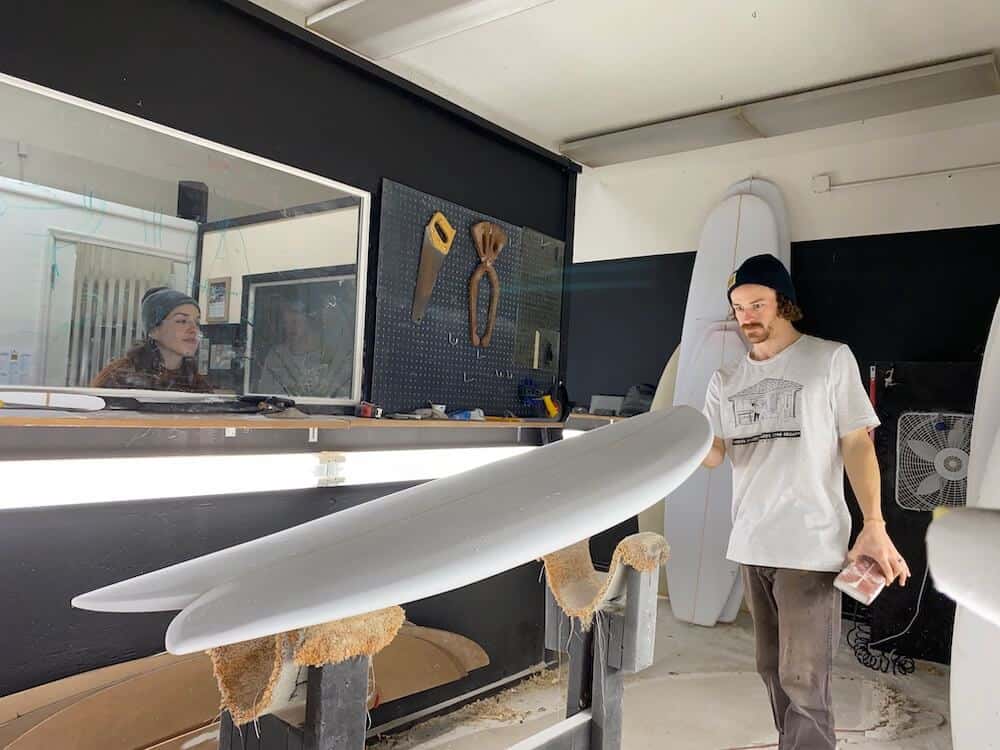
Surfing is a tough sport to master, and having exposure while you’re young is critical for learning the basics. For Nick Halleran, however, things played out differently. Growing up in a small town just outside of Buffalo, New York, surfboards seemed as uncommon as spaceships. It wasn’t until a vacation to the coast of North Carolina where Nick was first introduced to the world of surfing. But with no family members or friends to show him the way, surfing was a frustrating game of trial and error.
Nick doesn’t “remember the feeling of catching my first wave, but I do remember saying my first curse words as I got slammed by the ocean over and over again.” Even the rashes and sunburn weren’t enough to keep Nick from catching the surf-bug. After graduating from high school with a class of 90 students, Nick continued his schooling in New York. But with warm memories of southern summers, the cold and snow felt suffocating. He packed his bags, connected with some old friends and relocated to Virginia Beach, Virginia. It was there that Nick met up with local YoungLife leader Josh Shaw and began experimenting with making his first surfboards.
M.A.R. Surf Exchange: D.I.Y. Surfboards

Several years after his summers in North Carolina, Nick found himself with a fresh passion for surfing and the craftsmanship behind the sport. Following his move to Virginia Beach, Nick spent months reaching out to local surf shops in hopes of landing an apprenticeship as a surfboard shaper. However, after striking out time and time again, he decided to change his approach. “Most surfers have a bucket list dream of building their own board,” says Nick. “Before there were surf shops, that was the only way.”
Nick pulled together what little knowledge he’d gained and began teaching himself the art of surfboard shaping. At first, building surfboards was only a hobby. Nick’s desire to create things with his hands pushed him to fix up old surfboards and help his friends make new ones. But with a college degree revolving around interpersonal connection, he yearned for something that would allow him to build new and lasting friendships along the way. Eventually, plans for an instructional D.I.Y. surfboard shaping business were underway.
The Process of Shaping a Surfboard
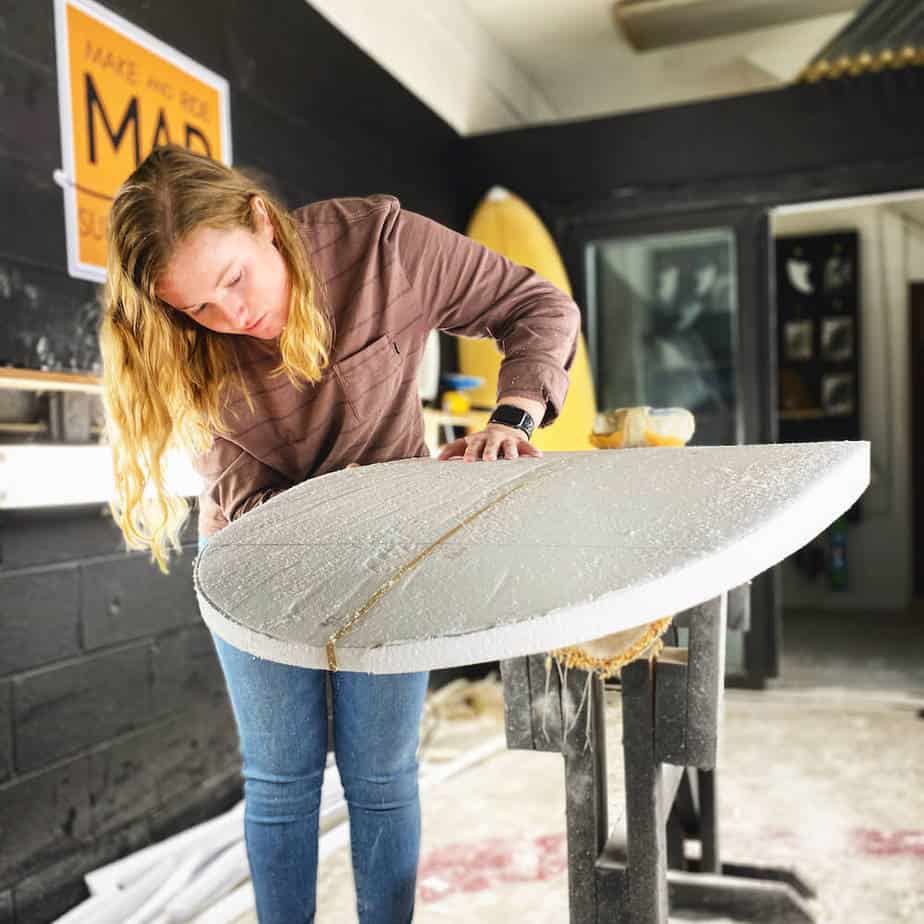
From those North Carolina summers to the opening of his very own surfboard business, Nick learned a great deal about surfing and the mechanics behind handcrafted surfboards. Customers need only take one look inside his Virginia Beach shaping room/shop to see just how far he’s come. With a storefront, two shaping bays and a glassing room, Nick’s hobby has become a high-quality and sustainable service for anyone in need of a surfboard. We asked Nick to walk us through his process, and he broke it down into two key components:
“Shaping” a Surfboard
It all starts with chunks of polyurethane foam called “blanks.” These blanks are roughly the shape of a standard surfboard but lack the essential details to function as a piece of performance equipment. Using electric planers, hand saws, sanding blocks, drywall screens and more, surfboard shapers slowly chip away at the blank until they end up with the shape they want.
Nick says: “Like David in the marble, the surfboard is already inside the blank. It’s just about carving away everything that’s in the way.”
“Glassing” a Surfboard
From rough blank to the finished shape, the surfboard then goes through the glassing process. Glassing, a technique also used for boat construction, refers to the application of fiberglass cloth and polyester resin. These materials both strengthen the surfboard and give it a water-tight finish. Different colored dyes can also be added to the resin to give the surfboard aesthetic appeal. But with a high margin for error, working with fiberglass and resin can be a bit of a nightmare. Regardless of the shape, glassing requires immense time and attention.
After the board has been hand-shaped, glassed and sanded over for a clean finish, it’s finally ready for use. These steps are simplified, but we’ll leave the nitty-gritty details to Nick for now.
Building Boards, Building Friendships
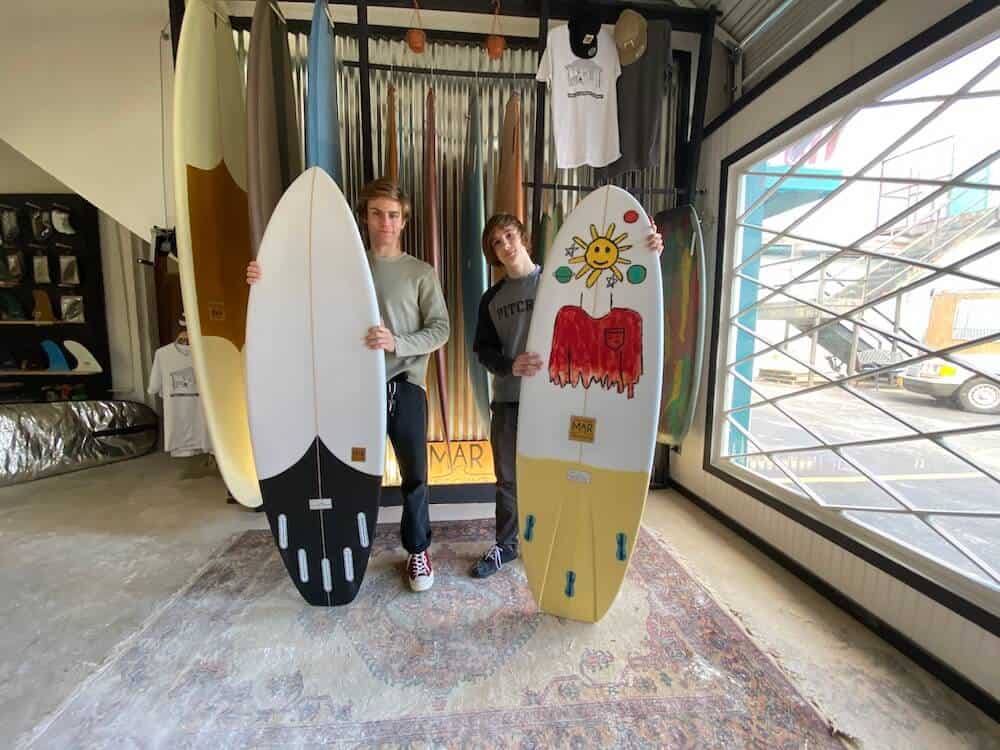
Nick may have established himself as a fully capable shaper, glasser, and businessman, but the most important part of his passion has almost nothing to do with surfboards. “We’re about providing an experience, not just a product,” Nick says. “The experience is what you remember… the surfboard is just the souvenir.”
When Nick first began learning about surf culture and surfboard construction, he was discouraged by the lack of information accessible to people trying to enter into the scene for the first time. He wanted to create an atmosphere where people could ask the questions that they felt too embarrassed to ask. He noticed the segregation between eager beginners and established surfers and brands and dreamed of creating a space where everyone could come together and share their love of surfing as equals. Now, nearly a decade after building his first surfboard in a backyard shed, his dream is coming true.
At M.A.R. Surf Exchange, Nick welcomes surfers of every experience level and gives them a hands-on approach to learning about surfboards, their surfing abilities and the practices they need to achieve their aspirations. Walking them through each step of the way, Nick partners with customers as they design their very own surfboard and watch their ideas come to life. For Nick, the happiness of the customer is the primary concern.
Preserving Surf Tradition; Pioneering Surf Culture

Making surfboards is a notoriously difficult process. Today, many shops rely on importing factory-produced surfboards from china for cheaper prices to make a profit. In the age of convenience and instant gratification, few people have the time to invest in quality hand-made goods. And when it comes to surfing, this shift in quality has created a desperate need for preserving the rich cultural traditions of the sport. Nick works hard to help educate anyone who’s willing to listen, and in the meantime, to bring the local community together in exciting new ways.
If you’re interested in learning more about what Nick and the M.A.R. Surf Exchange are up to, check out their website and Instagram pages to stay updated on products, lessons, and more. Feel free to send him a message! He’s happy to answer any questions… as long as he’s not out surfing.
